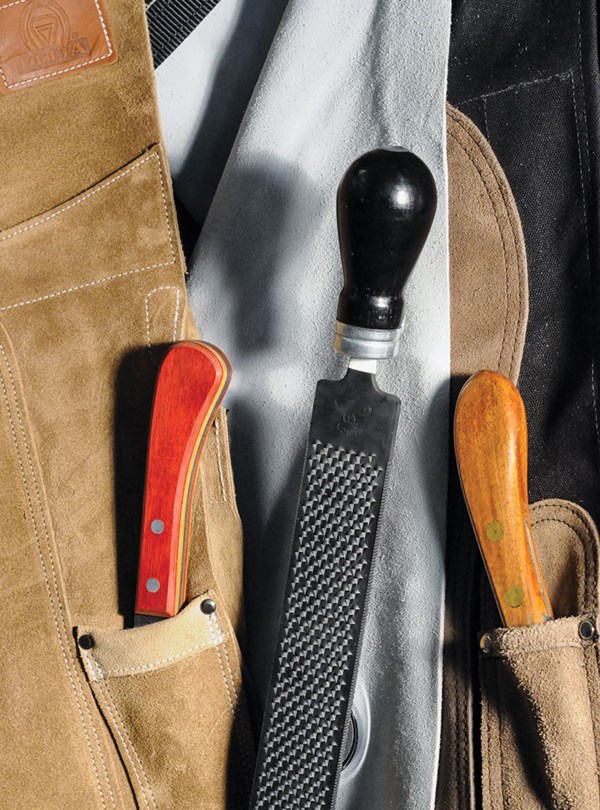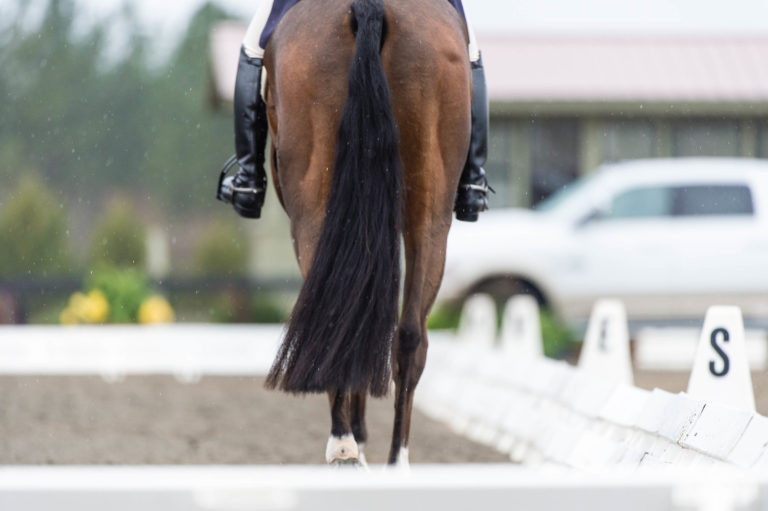
Can Proper Foot Balance Prevent Tendon Injuries?
Q: My previous dressage horse had a suspensory injury in his front leg, and I’m looking into ways to prevent this type of injury with my new warmblood gelding. He has huge, bouncy gaits. We are schooling Third Level and he is 5 years old. I heard that it is possible to prevent suspensory injuries by keeping a well-developed digital cushion in the hoof. Do you have more information on this method?
Name withheld by request
John Crandell
A: It’s true that a properly developed digital cushion is an important element in the proper function of the hoof. It functions as a dissipater of load energies and a circulatory pump, and its volume completes the hoof’s most effective form for balanced support of the limb.
While this makes the digital cushion a critical element, so is every other component of the hoof. There are no superfluous components weighing down the hoof of a galloping horse. Every bit of the hoof is as important as the next, and the health of one component is closely linked to every other. Therefore, manage the health and form of the whole hoof extremely well, and you will have the best-developed digital cushion.
Even the smallest deformity of the hoof alters the balance of the horse’s support to the upper limb and affects the harmony of function throughout the horse. Exactly where this dissonance first becomes apparent is often a factor of both an imbalance in the hoof and characteristics of the work schedule. For example, a relatively over-supported toe, which is a common shoeing issue, can eventually lead to a decrease in heel and digital-cushion development, particularly in young, impressionable hooves. Such a horse may have his first evidence of breakdown in the tendons—one of the most obvious tissues to be overloaded in this instance—if he is worked for shorter durations at high intensity. The same condition may cause other tissues, such as the suspensory ligament, to fail first in exercises where the horse feels the subtle burn in his muscles and tendons and adapts by reducing his engagement, thus letting other tissues, such as the less-feeling suspensory ligaments, take up the slack. This can be the case particularly in very regular work schedules. Tissues such as the suspensory ligaments have very little internal vascular support. Their exercise response metabolism is very slow, so they are most susceptible to cyclic failure breakdowns from many small stresses that have accumulated over any long period without an extended holiday to respond.
The nearly opposite hoof imbalance issue—excessive heel height or under-supported toe—can also lead to suspensory-ligament issues. This is most evident in horses that exercise regularly over firm footing. The excessive heel strike causes an extra preloading pulse on the suspensory ligaments with every stride and leaves the horse’s weight to fall onto pretensioned ligaments.
Focus on maintaining moderate body weight, a work schedule with appropriate rest periods and a simply natural and undistorted form in the hoof. You will then have the digital cushion—and other hoof structures—that your horse needs for his best avoidance of suspensory issues.
John Crandell has been shoeing horses since 1983. Engaged in the sport of endurance since 1976, in 2006 he and his horse Heraldic earned the first Triple Crown in the history of American endurance riding by winning the Old Dominion, the Tevis Cup and the AERC National Championships and was honored with Best Conditioned Horse awards at each event. With continued record-setting success in 2007, he was named Overall Horseman of the Year by The Chronicle of the Horse. He has often supported the USET endurance team as a staff member when not participating as a rider. He is based in West River, Maryland.












